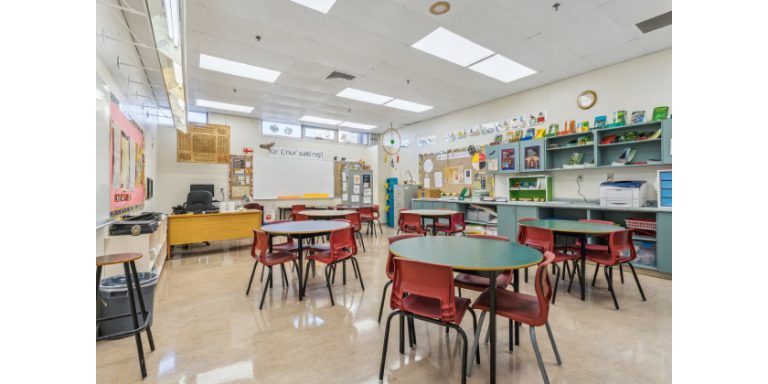Guide to the Canadian Electrical Code, Part 1, 25th Edition– A Road Map: Section 72

October 5, 2022
By William (Bill) Burr
Section 72 — Mobile home and recreational vehicle parks – 25th Edition
Rule 72-000 notes that this is a supplementary or amendatory section of the code and applies to the services and distribution facilities for mobile homes and recreational vehicle parks.
Rule 72-002 provides Special terminology for this section as follows:
Recreational vehicle lot – a designated area of a recreational vehicle park intended to accommodate one or more recreational vehicle stands, recreational vehicle supply equipment, surrounding natural features and associated recreational amenities,
Recreational vehicle lot supply equipment – electrical equipment located at a recreational vehicle lot for the purpose of supplying electrical power to one or more recreational vehicles, and
Recreational vehicle stand – that area of a recreational vehicle lot dedicated for the placement of a recreational vehicle.
Rule 72-100 requires that each mobile home and recreational vehicle must be provided with service equipment in accordance with Section 6.
Rule 72-102 outlines the calculated load for various service and feeder arrangements and requires that:
- The calculated load for the service or feeder supplying a mobile home park is based on the requirements of Rule 8-200 with respect to the service or feeder supplying an individual mobile home, and Rule 8-202 with respect to the service or feeder supplying more than one mobile home.
- The calculated load for the service or feeder supplying a recreational vehicle lot is determined by applying 12,000 watts for each 6-50R receptacle, 3600 watts for each 5-30R or each TT-30R receptacle, 2400 watts for each 5-20R receptacle, 1800 watts for each 5-15R receptacle, and by adding the watt rating of all other loads serving the lot as calculated by other sections of the code.
- For the purpose of the above, each duplex receptacle supplied from a multi-wire branch circuit is counted as two receptacles, where receptacles of different ratings are installed on one lot; the receptacle having the highest ampere rating serves as a basis for the calculation, and where the recreational vehicle lot supply equipment is in a location that can serve more than one recreational vehicle lot, the calculated load is based on the receptacle having the highest ampere rating for each lot served.
- For the purposes of calculating the service or feeder calculated load, the calculated load of a recreational vehicle lot used exclusively for tenting purposes is 600 watts for each 5-15R or 5-20R receptacle supplying such lots.
- The calculated load for the service or feeder supplying a recreational vehicle park, or portion thereof, is
- the sum of the receptacle loads of recreational vehicle lots as determined above and as calculated in accordance with Table XY,
- the loads for recreational vehicle lots used exclusively for tenting purposes in accordance with Subrule 4), and
- all other loads as calculated by other sections of the code.
Rule 72-104 requires that the branch circuit for each receptacle for a recreational vehicle lot must be preceded by an individual overcurrent device not exceeding the rating of the receptacle involved and by a suitable accessible disconnecting means.
Rule 72-106 requires that the circuit for each mobile home lot be preceded by a suitable accessible disconnecting means, an individual overcurrent device not exceeding the rating of the equipment involved, and within enclosures of weatherproof construction if installed outdoors.
Rule 72-108 specifies the connection facilities for recreational vehicles and mobile homes and outlines:
- the types of 15A, 20A, 30A, and 50A receptacles required where installed on recreational vehicle lots,
- the requirement for a permanent connection to a mobile home, except that for a home with a 50A rated overcurrent protection, a 50 A, 125/250 V, 3-pole, 4-wire Type 14-50R receptacle may be permitted (under Rule 2-030),
- all receptacles must be mounted in a horizontal plane, or so that the u-ground slot is uppermost, and
- 15A and 20A receptacles must be protected by a Class A type ground fault circuit interrupter.
Rule 72-110 states that power supply cords may be permitted for the connection of:
- recreational vehicles, only where the cords are not subject to mechanical damage; and
- mobile homes only when the lot is equipped with a 50 A, 3-pole, 4-wire Type 14-50R receptacle (permitted under Rule 2-030).
Rule 72-112 requires that when recreational vehicle lot supply equipment is provided, the equipment must be located on the left side of the parked vehicle, on a line that is 1.5 m to 2.1 m from the left edge (driver’s side) of the recreational vehicle stand, and at a point
- not more than 4.5 m from the rear of the recreational vehicle stand where the stand is a back-in lot; or the front of the recreational vehicle stand where the stand is a drive-in lot; or
- between 4.9 m forward of the rear of the stand and the centreline between the two roads that give access to and egress from the stand where the stand is a pull-through lot.
In addition, recreational vehicle lot supply equipment must be located not less than 600 mm or more than 1.2 m above the ground.
In the next installment, we will be discussing Section 74 — Airport installations
Source: CSA C22.1:21, Canadian Electrical Code, Part 1 – Safety Standard for Electrical Installations. © 2021 Canadian Standards Association. Please visit store.csagroup.org. With the permission of CSA Group, material is reproduced from CSA Group standard CSA C22.1:21, Canadian Electrical Code, Part 1 – Safety Standard for Electrical Installations. This material is not the complete and official position of CSA Group on the referenced subject, which is represented solely by the Standard in its entirety. While use of the material has been authorized, CSA Group is not responsible for the manner in which the data are presented, nor for any representations and interpretations. No further reproduction is permitted. For more information or to purchase standard(s) from CSA Group, please visit store.csagroup.org or call 1-800-463-6727.
William (Bill) Burr is an associate member of the Canadian Electrical Code, Part 1, Technical Committee and formerly Chair of the Canadian Advisory Council on Electrical Safety (CACES), Chief Electrical and Elevator Inspector for the Province of BC & the Northwest Territories, Director of Electrical and Gas Standards Development and Director of Conformity Assessment at CSA Group. Bill can be reached at Burr and Associates Consulting billburr@gmail.com..










![Guide to the Canadian Electrical Code, Part 1[i], 26th Edition – A Road Map: Section 10 – Grounding and Bonding](https://electricalindustry.ca/wp-content/uploads/2022/11/Guide-CE-Code-2.png)





